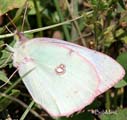Native Plants
Search for native plants by scientific name, common name or family. If you are not sure what you are looking for, try the Combination Search or our Recommended Species lists.
Prunella vulgaris
Prunella vulgaris L.
Common Selfheal
Lamiaceae (Mint Family)
Synonym(s):
USDA Symbol: PRVU
USDA Native Status: L48 (N), AK (N), HI (I), CAN (NI), SPM (N)
This low, perennial is easily recognized by its erect, many-flowered spikes and associated, overlapping, hairy bracts. The square stem has dense, cylindrical, terminal spikes of purple flowers; the spikes elongate after flowering. It is often considered a weed of lawns and moist shady spots. A form that flowers when only 2" (5 cm) tall has become common in lawns. Its common name derives from wide use as a herbal remedy for throat ailments.
Plant Characteristics
Duration: PerennialHabit: Herb
Size Notes: Up to about 20 inches tall.
Leaf: Gray-Green
Fruit: Nutlets.
Bloom Information
Bloom Color: White , PurpleBloom Time: May , Jun , Jul , Aug , Sep
Distribution
USA: AK , AL , AR , AZ , CA , CO , CT , DC , DE , FL , GA , HI , IA , ID , IL , IN , KS , KY , LA , MA , MD , ME , MI , MN , MO , MS , MT , NC , ND , NE , NH , NJ , NM , NV , NY , OH , OK , OR , PA , RI , SC , SD , TN , TX , UT , VA , VT , WA , WI , WV , WYCanada: BC , NB , NS , ON , PE , QC
Native Distribution: Throughout much of North America, except far north.
Native Habitat: Gardens, fields, roadsides.
Growing Conditions
Water Use: MediumLight Requirement: Sun , Part Shade
Soil Moisture: Moist
CaCO3 Tolerance: Medium
Conditions Comments: Its favorite habitat includes moist fields, gardens, pastures and along woodland edges in the eastern and southern portions of Texas. It can be grown most anywhere, with a little extra water in very dry conditions. In very hot areas, give it a spot that is protected from the hot afternoon sun.
Benefit
Use Wildlife: Self-heal is a favorite of bumblebees and butterflies.Conspicuous Flowers: yes
Attracts: Butterflies
Larval Host: Clouded sulphur butterfly
Nectar Source: yes
Deer Resistant: Minimal
Butterflies and Moths of North America (BAMONA)
|
Clouded Sulphur (Colias philodice)  Larval Host |
Find Seed or Plants
Find seed sources for this species at the Native Seed Network.
Mr. Smarty Plants says
Native host plants for Painted Lady Butterfly
June 01, 2006
I am looking for host plants for the Painted Lady Butterfly that I can plant in my school's (I am a teacher) native plant/butterfly garden. As part of the curriculum, each spring the 1st grade raises...
view the full question and answer
Medicinal plants at the Wildflower Center
April 19, 2006
What kinds of medicinal plants do you have at the Wildflower Center?
view the full question and answer
National Wetland Indicator Status
| Region: | AGCP | AK | AW | CB | EMP | GP | HI | MW | NCNE | WMVE |
| Status: | FAC | FAC | FACU | FACU | FAC | FACU | FAC | FAC | FACU |
From the National Organizations Directory
According to the species list provided by Affiliate Organizations, this plant is on display at the following locations:Pineywoods Native Plant Center - Nacogdoches, TX
Native Seed Network - Corvallis, OR
Bibliography
Bibref 1207 - Earth Medicine, Earth Food (1990) Michael A. WeinerSearch More Titles in Bibliography
Web Reference
Webref 23 - Southwest Environmental Information Network (2009) SEINet - Arizona ChapterAdditional resources
USDA: Find Prunella vulgaris in USDA PlantsFNA: Find Prunella vulgaris in the Flora of North America (if available)
Google: Search Google for Prunella vulgaris
Metadata
Record Modified: 2022-12-07Research By: TWC Staff